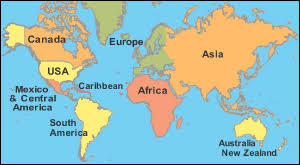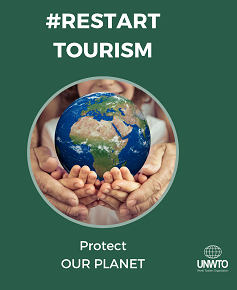Tourism expected to pass $2 trillion

Berlin:Travel and tourism is set for a milestone year as the industry’s direct contribution to the global economy is expected to pass US$2 trillion in GDP and 100 million jobs.
According to research by the World Travel&Tourism Council (WTTC), the global travel and tourism industry will grow by 2.8 percent in 2012, marginally faster than the global rate of economic growth, predicted to be 2.5 percent.This rate of growth means that the travel and tourism industry is expected to directly contribute US$2 trillion to the global economy and sustain some 100.3 million jobs.
When the wider economic impacts of the industry are taken into account, travel and tourism is forecast to contribute some US$6.5 trillion to the global economy and generate 260 million jobs – or 1 in 12 of all jobs on the planet.
In 2011, travel and tourism’s total economic contribution, taking account of its direct, indirect, and induced impacts, was US$6.3 trillion in GDP, 255 million jobs, US$743 billion in investment, and US$1.2 trillion in exports. This contribution represented 9 percent of GDP, 1 in 12 jobs, 5 percent of investment, and 5 percent of exports.
David Scowsill, President and CEO of WTTC, said: “In 2012, when international travelers are expected to surpass one billion for the first time, the industry will pass two other major milestones: a direct contribution of US$2 trillion to the world economy and 100 million jobs. But these numbers are dwarfed by the total forecast contribution of our industry – US$6.5 trillion to the global economy and 260 million jobs.”
Over the medium-term, the prospects of the industry are even more positive with average annual growth expected to be 4 percent through to 2022 by which time travel and tourism will employ 328 million people – or 1 in 10 of all jobs on the planet.
David Scowsill continued: “It is clear that the travel and tourism industry is going to be a significant driver of global growth and employment for the next decade. Our industry is responsible for creating jobs, pulling people out of poverty, and broadening horizons. It is one of the world’s great industries.”
Other selected highlights from the research show:
– South and Northeast Asia will be the fastest-growing regions in 2012, growing by 6.7 percent, driven by countries such as India and China where rising incomes will generate an increase in domestic tourism spend and a sharp upturn in capital investment, and recovery in Japan.
– After an extremely challenging 2011 when civil unrest and violence had a dramatic impact on demand for Egypt, Tunisia, and Libya, North Africa is showing signs of recovery in 2012 with travel and tourism direct GDP growth forecast at 3.6 percent. Morocco (8.3 percent) will be the star performer of this region as negative perceptions of security continue to affect tourism in Egypt and Tunisia.
– In the Middle East, where civil unrest and violence in some countries continues, growth will be more subdued (3 percent), although there are stark differences at the country level. Qatar will grow fastest at 13.2 percent, while Syria will likely see another dramatic fall, estimated at 20.5 percent, as the political situation worsens, increasing concerns over security. It is worth noting that 14 percent of all international arrivals in the Middle East in 2010 were for Syria, the second most important destination in the region after Saudi Arabia.
– The mature economies of North America and Europe will continue to struggle in 2012. North America, which saw a slight upturn in the USA’s economic situation at the end of 2011, should see growth of only 1.3 percent in travel and tourism direct GDP over the year.
– The prospects for travel and tourism growth in Europe in 2012 are precarious. Current forecasts suggest a 0.3 percent increase in travel and tourism direct GDP for the region overall, but this will be propped up by newer economies such as Poland and, of course, Russia. A decline of 0.3 percent is expected across the European Union. Consumer spending is set to tighten, as austerity measures kick in, and there continues to be considerable uncertainty around the future of the Eurozone and peripheral economies of Greece, Spain, Italy, and Portugal.














